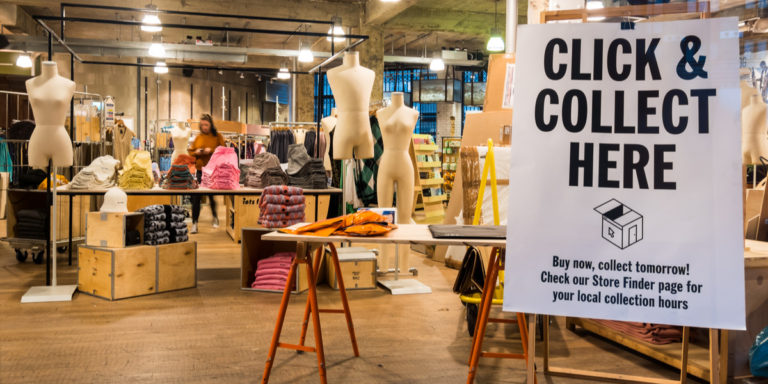We know that customers want options as far as deliveries go. But where should retailers draw the line? Offer your customers too many shipping options at checkout and they could be overwhelmed by choice. Offer too few and they might show themselves the door!
How do you achieve the right balance not only between offering enough delivery options and curating the best mix for your target audience?
Following on from our shipping and delivery glossary, we’re breaking down some of the most popular (and lesser-known) delivery options that are available to retailers.
Standard Delivery
Standard delivery is shipping that doesn’t have any special arrangement to get to the customer. While this doesn’t necessarily mean that standard shipping will take the longest time to get to customers, orders aren’t bound by a specific delivery day or timeslot. Standard shipping is generally the cheapest option for both retailers and customers. Standard delivery times vary from retailer to retailer but typically range from 2-8 days.
Express Delivery
Express delivery is shipping that’s been expedited. It’s a more urgent option than standard delivery, meaning that orders leave warehouses quicker and rely on different forms of transportation – most notably by air. Express delivery generally involves getting orders to customers in a short timeframe, but not necessarily by the next day.
Next Day Delivery
Next-day delivery is exactly that – a promise to deliver an order the day after a customer places it. It typically applies to orders placed before a specific cut-off point, to give couriers enough time to deliver the items on schedule. Next-day delivery can mean that orders are delivered on the next calendar day (including weekends, public holidays, and Bank Holidays) or the next working day (Monday-Friday excluding public and Bank Holidays). This depends on the specific courier, so it’s vital for retailers to clearly outline next-day delivery schedules on their online stores.

2 Day Shipping
Similar to next-day deliveries, 2-day shipping can mean that orders placed will either arrive within two calendar days or two business days. The difference between 2-day shipping and another option such as express shipping is that express shipping is an expedited service, but it doesn’t promise the customer an exact arrival date. 2-day shipping does exactly what it says on the tin, and retailers are obligated to deliver within this specific window of time.
Same Day Delivery
Same-day delivery refers to orders that are placed before a specific cutoff point to guarantee their arrival in less than 24 hours — arrival times are often staggered throughout the day depending on when an order is placed. Naturally, this option tends to come at a premium price for both retailers and customers due to the urgent dispatch and delivery need. Same-day delivery also tends to come with limitations — often not available to customers in rural areas, or only available on orders over a certain value. It always comes with the caveat that delays may occur for various reasons, such as technical issues, extreme weather events, and so on.
Timed-Delivery Slots
Timed delivery slots enable customers to choose a nominated day and time for their packages to arrive. Unlike express and next-day delivery, which are both about getting orders to customers quicker, timed deliveries are more concerned with precision. Time slot availability varies from retailer to retailer, and as items must be delivered at pre-confirmed times, it means that dispatch and last-mile vehicle management have to be carefully coordinated to ensure accuracy. Timed-delivery slots are generally offered as a premium option to customers.
Local Pickup
Local pickup is a shipping method that provides an alternative type of last-mile delivery — orders aren’t delivered directly to the customer, but instead, to a collection point where the customer picks it up themselves. Collection points can be bricks and mortar stores, depots, parcel lockers, post offices, or even convenience stores. Local pickup is a popular option for customers who know they won’t be home when a package arrives, as it provides security and a certain level of flexibility in terms of the timeframe they have to collect.
Ship to Store (Click and Collect)
Click and collect is an option whereby customers buy products online and pick them up in a brand’s brick and mortar store location. Depending on whether or not stock is synchronised across a retailer’s eCommerce systems, orders are either fulfilled directly from the retail store itself or shipped to the store from a central warehouse. The timeframe from when an order is placed to when it’s ready for collection is dictated by this.

Ship to Multiple Addresses
Shipping to multiple addresses occurs when a customer places an order and chooses to send some items to one address and the rest to another. This doesn’t necessarily mean that a single order is shipped to two home or business addresses. It could mean using two completely different delivery methods – for example, local pickup for part of the order and express home delivery for the remainder.
Split Order Shipments
Similar to shipping to multiple addresses, split orders occur when a single order is made, but the main difference here is that the order is being shipped to one address, but being fulfilled in separate shipments. This generally occurs on the retailer’s side rather than the customers when multiple products in a single order are sent from two different warehouses, or when dispatch needs to be staggered due to stock availability – i.e some items are in stock now and can be shipped immediately while others need to come back into stock before they can be delivered.
It’s easy to see the similarities between certain options — so it’s probably not necessary to offer next-day delivery and 2-day delivery AND same-day delivery! Instead, consider offering methods that fall under different categories, for example, express (speed), timed delivery slots (precision), and local pickup (flexibility). Most importantly, clearly define what each method means so that customers have a clear understanding of what it is that they are choosing (and have realistic expectations on when/how their order will arrive!)
It’s also important to note that not every courier service offers all of these options, so if you work with a single carrier, the options that you can offer are the options that they can offer you.
Talk to us about how Scurri can help you save time and money on your deliveries by matching every order to the right carrier and service!

AUTHOR
Michelle McSweeney Content Marketer
